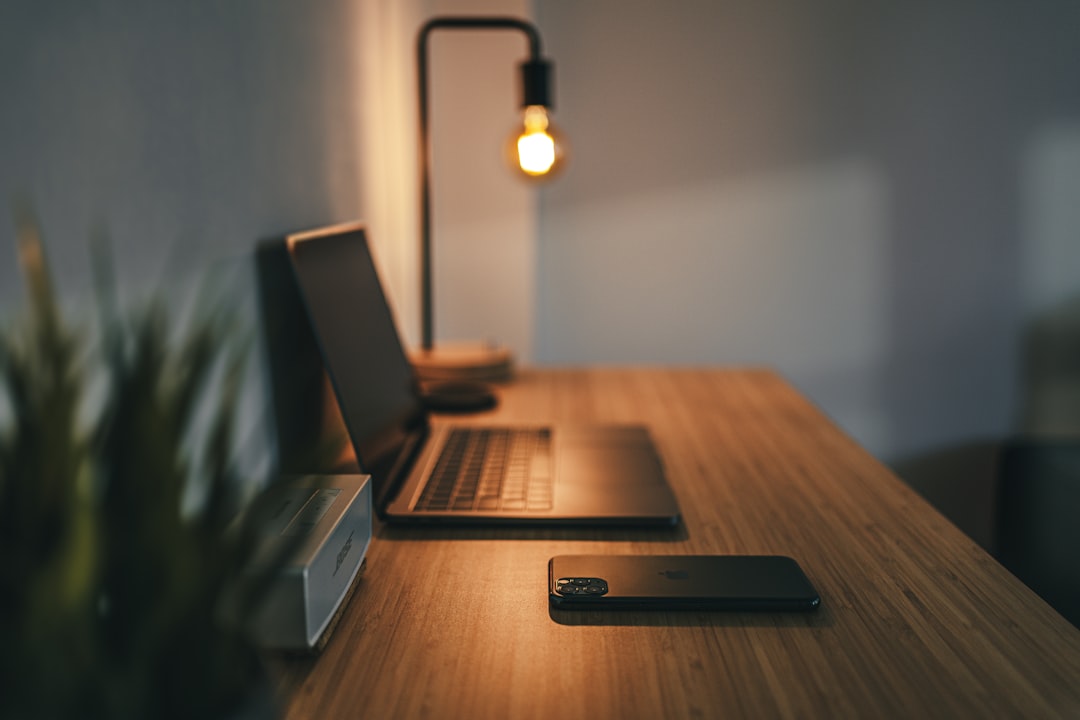The world has taken a complete shift towards remote work since the COVID-19 pandemic hit us last year. Remote work, while an exciting prospect, brings with it a host of new challenges and obstacles that didn’t exist in a traditional office setting. The freedom and flexibility of remote work that we all dreamed of has quickly translated to blurred lines between work and personal life, unreliable internet connections, and a lack of focus during work hours. Managing work from home has become a difficult task, and has resulted in many individuals struggling to maintain productivity and structure in their daily routine.
With no immediate solutions in sight, it is imperative to develop strategies and systems that will help you to stay focused and productive while working remotely. This blog post will act as a comprehensive guide that will provide you with easy-to-implement tips and proven techniques that will help you to manage your remote work efficiently. From finding the best work-space to taking regular breaks, this guide will cover all the crucial aspects of remote work that are vital to maintaining productivity and avoiding burnout.
So, without any further ado, let’s dive into the world of remote work and explore the strategies that will help you to maximize your productivity and balance your work-life harmony.
Establishing Your Work Space
When working remotely, it is essential to establish a designated work space that promotes focus and productivity. Your work space should be organized, comfortable, and equipped with the necessary tools and resources.
Creating a routine is another essential element of establishing your work space. A routine will help you approach work with a set of habits and expectations, allowing you to transition into a more focused and productive mindset. Start by determining your optimal work schedule, including specific hours for work, break, and meal times. Then, plan your daily tasks and prioritize them based on importance and urgency. This will help you stay on-track and focused on your objectives throughout the day.
Setting up your work-station is also crucial. Ensure that your workspace is ergonomically correct, comfortable, and noise-free. Select a comfortable chair with adjustable height and support, and consider investing in a standing desk to maximize productivity and reduce the harmful effects of prolonged sitting.
In addition, keep your work area organized and clutter-free. Having a clean and organized workspace will help reduce stress and minimize distractions. Invest in essential office supplies, such as a notepad, pens, and a phone charger, to ensure you have everything you need within reach and avoid wasting time searching for items.
Overall, establishing your work space is a key factor in achieving your remote work productivity goals. By creating a routine, setting up your workstation, and keeping your space organized and comfortable, you will be better equipped to tackle your daily tasks with focus and purpose.
Setting up your work-station is also crucial.
Maximizing productivity through scheduling and time management
One of the biggest challenges with remote work is managing your time and maximizing your productivity. Without a structured work day, it’s easy to get distracted and lose focus. However, with the right planning and discipline, remote work can actually increase your productivity.
Here are some tips for managing your time and maximizing your productivity while working remotely:
Create a schedule and stick to it
One of the most important things you can do to stay productive while working remotely is to create a schedule and stick to it. This means setting regular work hours and sticking to them as much as possible. It’s also important to schedule breaks and downtime to rest and recharge.
Set goals and prioritize tasks
When working remotely, it’s easy to get overwhelmed with tasks and distractions. This is why it’s important to set clear goals and priorities for each day. This can help you stay focused and on track, even when distractions and interruptions come up.
Use technology to your advantage
Technology can be a powerful tool for managing your time and increasing your productivity. There are plenty of apps and tools available that can help you stay organized, manage your time, and streamline your workflow. For example, project management tools like Trello and Asana can help you stay on task and track your progress, while time-tracking apps like RescueTime can help you identify areas where you’re wasting time.
Take advantage of downtime
One of the benefits of working remotely is the flexibility to take advantage of downtime. If you have a break between meetings, for example, you can use that time to tackle smaller tasks or catch up on emails. This can help you stay productive even when you have limited time.
Establish boundaries
When you work remotely, it can be difficult to establish boundaries between work and personal life. This is why it’s important to set clear boundaries and stick to them. For example, you might set a rule that you won’t check work emails after a certain time or make a habit of leaving your work station at the end of the work day.
By following these tips, you can manage your time effectively and stay productive while working remotely.
However, with the right planning and discipline, remote work can actually increase your productivity.
Staying Connected: Balancing Isolation and Connectivity through Digital Technologies
In the era of remote work, maintaining social connectivity with colleagues and clients can become a big challenge. As you work remotely, it’s not just your physical space that you’re separated from, but the daily interactions and collaborative work environment can also be compromised. However, thanks to digital technologies, we are more connected than ever before!
Here are a few handy tips to leverage digital technologies and stay connected while working remotely:
1. Keep in touch with colleagues
Working remotely can lead to a sense of isolation that can affect productivity levels if not managed well. With emails, video conferencing apps and real-time messaging tools, it has never been easier to maintain regular contact with colleagues. Use messaging tools like Slack or Microsoft Teams to keep in touch with colleagues in real-time, or schedule regular video calls to catch up with your team!
2. Use social media to build professional relationships
Social media is an effective way to stay connected with people from different corners of the world. You can join professional groups on social media platforms like LinkedIn or Twitter to stay up-to-date on industry trends and make new contacts. It’s a great way to build relationships with like-minded professionals, which can lead to collaborations or job opportunities in the future.
3. Attend virtual networking opportunities
Social distancing has made in-person networking events challenging. However, you can still attend virtual events to meet and interact with industry professionals, thought leaders, and potential clients. Many organizations host webinars and virtual conferences that offer attendees the opportunity to network and learn about the latest industry trends without leaving their homes.
4. Take advantage of collaboration tools
Working remotely can present challenges when it comes to collaborating with colleagues on projects. However, collaboration tools like Asana, Trello or Basecamp can make it easy to manage projects, assign tasks and oversee team members’ progress towards project completion. Such tools can also foster teamwork and cohesion, leading to improved productivity overall.
In conclusion, remote work can lead to social isolation, but it is not a reason to be disconnected from your colleagues and clients. With digital technologies, staying connected with your team and clients is easy, and it can even improve your work relationships! Incorporating these tips into your remote work routine can ensure that you maintain connectivity and balance throughout your workday.
With digital technologies, staying connected with your team and clients is easy, and it can even improve your work relationships.
Taking Breaks: Embracing Mental and Physical Wellness for Productivity
When it comes to remote work, taking breaks is not just an option, it’s a necessity. It is easy to underestimate the benefits of taking a break when working from home. When your office and your home merge into one, it can be easy to lose track of time, leading to a lack of balance between work and personal life.
Taking regular breaks during work hours is crucial to maintaining a healthy mental and physical state. As a remote worker, you can leverage this opportunity to take care of yourself, and in return, increase productivity and efficiency in your work.
But, what exactly is considered a break when working remotely?
A break can be defined as a moment when work stops, giving you the opportunity to refresh your mind and body. It can be as simple as getting up from your chair, stretching your legs, and grabbing a cup of water. You can also take a longer break, such as going for a walk, doing some exercise, or engaging in a hobby that you enjoy.
Taking breaks not only helps in maintaining physical health, but they are also essential for mental health. It is essential to take a break to refresh the mind, rejuvenate the creative process and replenish energy to resume work with a fresh mindset.
Incorporating mental health exercises into your daily routine can be beneficial too. A few minutes of meditation or other relaxation techniques can do wonders to your mental health. These quick exercises help to settle your thoughts and provide clarity and focus before jumping back into work again.
Another form of physical and mental break is to engage in social interaction. It doesn’t matter if it is a chat with a partner or a call with a friend, as long as it is an activity that encourages social connectedness.
In conclusion, taking breaks during work hours is crucial to maintaining a healthy and productive work-life balance in remote working environments. It is essential to take care of your mental and physical health by incorporating breaks, relaxation techniques and social connectedness into your daily routine.
It can be as simple as getting up from your chair, stretching your legs, and grabbing a cup of water.
Avoiding Distractions: Strategies for Minimizing Distractions and Staying On-Task
Distractions are the nemesis of productivity in remote work. When working from home, it’s easy to lose focus amidst the comfort of the environment, the lack of supervision, and the many distractions in your immediate surroundings. Therefore, it’s essential to develop strategies that will help minimize distractions and stay on-task.
One effective way to avoid distractions is by creating a focused work environment. A dedicated workspace that’s free from distractions such as TV, family members, and pets can make a big difference when trying to concentrate. Ensure that your workspace is well-organized, well-lit, and comfortable. Additionally, you can use noise-canceling headphones or earplugs to help eliminate any background noise that may be distracting.
Another effective way to avoid distractions is by using the Pomodoro technique, which breaks down your workday into 25-minute work intervals, separated by a five-minute break. During the 25-minute intervals, you are laser-focused on one task, and any distractions are ignored until the end of the interval. Taking breaks is essential, but it’s best to take them at scheduled times rather than whenever you’re distracted.
Being aware of your online habits and setting limits is another way to minimize distractions. Having a set schedule for checking emails, social media, and other online activities can prevent them from taking up too much of your attention. Also, disabling notifications for non-work-related apps or websites can help you stay focused on your tasks for longer periods.
Lastly, being mindful of your work style can help you avoid distractions. Identify which hours of the day you’re most productive and plan to do tasks that require more focus during those hours. On the other hand, you can plan to do less demanding tasks, such as replying to emails, during times when you are less productive. This can help you make the most of your time and avoid distractions.
In conclusion, distractions can be detrimental to remote work productivity but can be minimized through the use of certain strategies. Creating a focused work environment, using the Pomodoro technique, setting limits on online habits, and being mindful of your work style are all effective ways to stay on-task and ensure that distractions don’t disrupt your workflow.
One effective way to avoid distractions is by creating a focused work environment.
Conclusion: Reminding Readers of Key Recommendations for Remote Work Productivity
As we wrap up this blog post on remote work productivity, it’s important to revisit some of the key recommendations that we’ve outlined throughout the various sections.
Firstly, it’s crucial to establish your work space in order to create a routine and set yourself up for success while working remotely. This includes setting up your work-station, ensuring that you have all of the necessary equipment and tools, and creating a routine that emphasizes productivity and focus.
Furthermore, effectively managing your time is critical when working remotely. By scheduling your days, to-do lists, and blocking out distractions, you can ensure that you are making the most of your remote work experience.
Staying connected is also an essential part of remote work productivity. By leveraging digital technologies, you can maintain your social and professional connections, balance isolation and connectivity, and ensure that you remain engaged in your work.
Taking breaks is equally as important. Embracing the importance of mental and physical wellness through breaks and self-reflection can significantly contribute to your overall experience of remote work. By incorporating breaks into your schedule, you can recharge, refocus, and return to your work with a clear and refreshed mindset.
Finally, minimizing distractions is crucial when working remotely. By establishing boundaries, setting priorities, and implementing strategies for staying on-task, you can avoid potential distractions and maintain your productivity.
In conclusion, we hope that this blog post has provided you with a comprehensive understanding of remote work productivity and offered you some valuable insights for maximizing your success when working from home. Remember to prioritize your work space, time management, connectivity, wellness, and minimizing distractions, and you’ll be well on your way to achieving your remote work goals. Thank you for reading!





